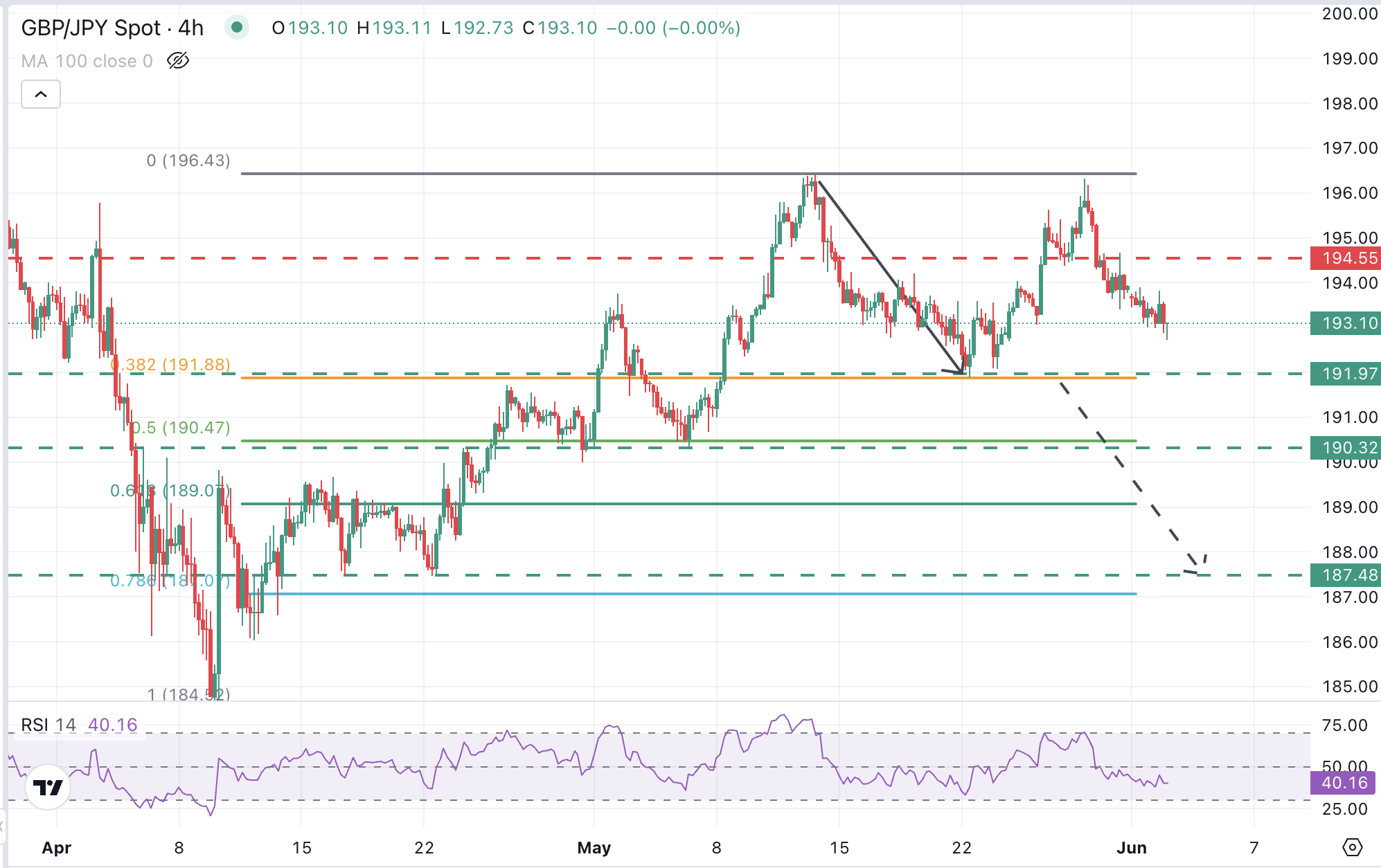GBP/JPY Price Forecast: Potential double top at the 196.40 area
- The Pound extends losses with the Yen favoured by risk aversion.
- BoJ's Ueda has kept hopes of further interest rate rises alive.
- GBP/JPY approaches a key support area at 192.00.
The Pound is trading lower for the fourth consecutive day against a stronger Yen, favoured by the frail market sentiment, and hawkish comments by BoJ Governor Ueda, which keep hopes of further rate hikes alive.
The BoJ’s chief warned about trade uncertainty but maintained that the bank will continue raising rates if the economic expectations are met. Ueda also observed the tight labour market that pushes wages higher and stated that Japan’s real interest rate remains deeply negative, all in all, a hawkishly-leaning message.
Technical analysis: The 192.00 area is a key support level
The Sterling reversed course last week, after rejection at 196.30, a few pips below the May 13 and 14 highs, and has traded lower ever since. Intraday studies are well into negative territory, and the pair approaches the 192.00 area, which is the neckline of a double top at the mentioned levels.
A successful breach of this level would confirm a deeper correction after the April-May rally, bringing the 190.30 level into focus. The Double tpop’s measured target is 187.50.
On the upside, resistances are at 194.50 and the mentioned tops at the 196.30-193.40 area.
GBP/JPY 4-Hour Chart

Bank of Japan FAQs
The Bank of Japan (BoJ) is the Japanese central bank, which sets monetary policy in the country. Its mandate is to issue banknotes and carry out currency and monetary control to ensure price stability, which means an inflation target of around 2%.
The Bank of Japan embarked in an ultra-loose monetary policy in 2013 in order to stimulate the economy and fuel inflation amid a low-inflationary environment. The bank’s policy is based on Quantitative and Qualitative Easing (QQE), or printing notes to buy assets such as government or corporate bonds to provide liquidity. In 2016, the bank doubled down on its strategy and further loosened policy by first introducing negative interest rates and then directly controlling the yield of its 10-year government bonds. In March 2024, the BoJ lifted interest rates, effectively retreating from the ultra-loose monetary policy stance.
The Bank’s massive stimulus caused the Yen to depreciate against its main currency peers. This process exacerbated in 2022 and 2023 due to an increasing policy divergence between the Bank of Japan and other main central banks, which opted to increase interest rates sharply to fight decades-high levels of inflation. The BoJ’s policy led to a widening differential with other currencies, dragging down the value of the Yen. This trend partly reversed in 2024, when the BoJ decided to abandon its ultra-loose policy stance.
A weaker Yen and the spike in global energy prices led to an increase in Japanese inflation, which exceeded the BoJ’s 2% target. The prospect of rising salaries in the country – a key element fuelling inflation – also contributed to the move.
